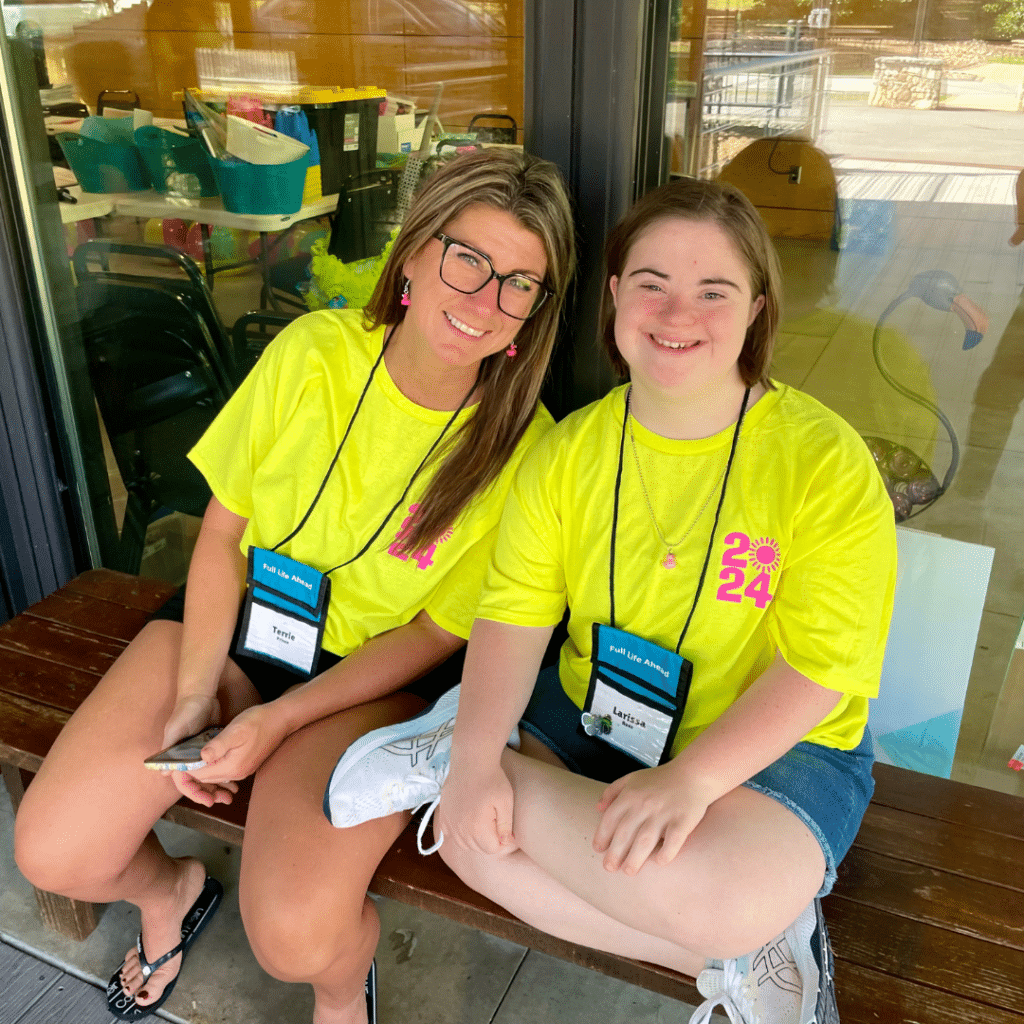
There was a time when it was unimaginable for people with significant disAbilities to own businesses, to be homeowners, to enjoy meaningful work and great friendships within their community. There was a time when people with disabilities were rarely seen in public schools.
When Mikelle first entered her kindergarten class, it was unthinkable that she would graduate “outstanding senior”, collecting a  standard diploma and stand next to her friends. Not bad for a young woman with cerebral palsy, unable to walk or talk without assistive technology. Mikelle’s speaking career, which she started in high school, took off like a rocket as she moved in such heady circles as the Colorado delegate for Social Security Beneficiaries. What followed was homeownership, running a small business and a circle of amazing friends.
standard diploma and stand next to her friends. Not bad for a young woman with cerebral palsy, unable to walk or talk without assistive technology. Mikelle’s speaking career, which she started in high school, took off like a rocket as she moved in such heady circles as the Colorado delegate for Social Security Beneficiaries. What followed was homeownership, running a small business and a circle of amazing friends.
There was a time a young man experiencing Down’s Syndrome automatically went to a sheltered workshop, but in today’s world and because of the efforts of DisAbility advocates, he owns his own restaurant in New Mexico, called Tim’s Place, a place where everyone is welcome and hugs are free.
The DisAbility movement began in the mid-20th Century, in part because of the WWII wounded and disAbled veterans.
Returning veterans often found their communities and family perceiving them as less “able” to be productive and contributing citizens. As a result, veterans developed awareness regarding issues which everyday citizens took for granted. Veterans sought to be self-reliant and independent once again but found access to public transportation, telephones, stores and even bathrooms challenging.
Even more difficult, were overcoming barriers to the workplaces with stairs that provided little access and, like today, there are issues with attitudes toward hiring someone who is differently abled. In the 1960’s the disAbility rights movement worked in concert with the civil rights movement. Activists, mobilized locally, working toward developing national initiatives which addressed the barriers to living a typical life in their community.
Parents began refusing to place their children with special needs into institutions choosing instead to raise their children at home along next to their other children. Their lobbying efforts result in the 1972 passage of the Rehabilitation Act. Finally, the civil rights of people with disabilities were protected by law.
The next year, The Rehabilitation Act of 1973 (Section 504) provided the opportunity for employment within the federal government and federally funded programs, prohibiting discrimination of either physical or mental disabilities.
In 1975, The Education for All Handicapped Children Act was passed to guarantee equal access to public education for people with disabilities and was later renamed in 1990 to the Individuals with Disabilities ACT (IDEA) and expanded the rights of students and parents to be involved in educational decisions which affected them.
Additionally, The American’s with Disabilities Act passed in 1990. The ADA ensures equal treatment and equal access for people with disabilities to employment, public accommodations and prohibits discrimination based on disabilities in employment, services rendered by state and local governments, places of public accommodation, transportation, and telecommunications.
Because of these laws, Tim and Mikelle are contributors to society. They pay taxes. They are employers and are leaders within their communities.
Like any other American, people with disabilities have dreams, no different than most. A good job or career, loving partners and a “home of their own” and a chance to share their personal genius with their communities.
Too often, the concepts of employment, home ownership, and financial self-determination rarely come up at school meetings. For too many parents and people with special needs, a successful graduation outcome is a life in poverty under custodial care. But, it doesn’t have to be this way.
Success in life comes from mentorship, teamwork and a robust community of H.O.P.E. Let’s rock this New Year!


